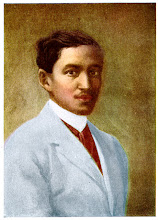
Gemini, the sign of the Twins, is dual-natured, elusive, complex and contradictory. On the one hand it produces the virtue of versatility and on the other the vices of two-facedness and flightiness. Changing horses in the middle of the stream is another small quirk in the Gemini personality which makes decision making, and sticking to a decision, eventually hard for them. Just like Rizal, when he was writing his novels particularly in El Filibusterismo, he had a hard time finishing it because of his dilemmas between the characters of Simoun and Ibarra. Expressing and putting himself in the characters made it more complicated and thrilling as well.
When they are good, they are very attractive; when they are bad they are more the worse for being the charmers they are. No wonder why Jose Rizal had been into many relationships. The girls who fell in love with him, various women and different races proved that his charm was really great.
Jose Rizal has a keen, intuitive, brilliant intelligence and love cerebral challenges. But his concentration, though intense for a while, does not last. His mental agility and energy gives him a voracious appetite for knowledge from youth onward.
If I were to give an example of or definite meaning of the zodiac sign "Gemini", I guess Rizal himself would probably be the best description I can give.
Rizal = Gemini





